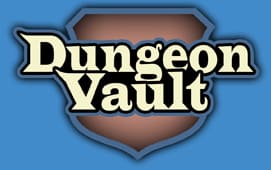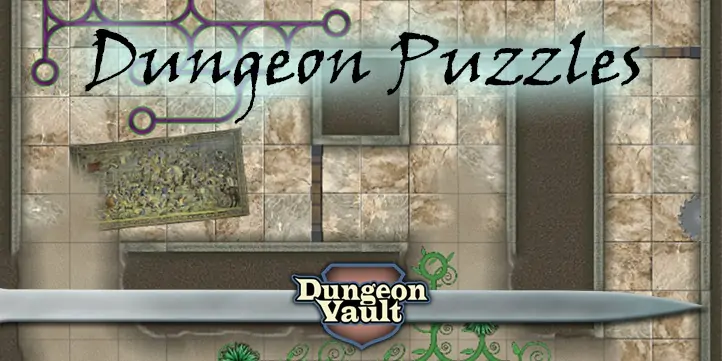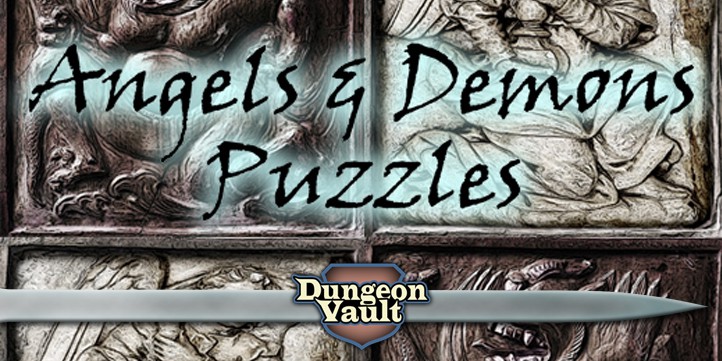
There are three types of tile and terrain puzzles for Dungeons & dragons:
- Terrain Tile Puzzles
- Dungeon Tile Puzzles
- Wall and Floor Tile Puzzles
In this article we’ll explore all sorts of tile and terrain puzzles. I’ll be using my illustrated tile puzzles to demonstrate the concepts, but the ideas can be easily transferred to your homebrew puzzles as well.
Terrain Tile Puzzles That Actually Work
What makes terrain tile puzzles special for your D&D game?
The very cool and unique thing about terrain tile puzzles is that a solved puzzles immediately doubles as terrain or a battle map. Confused? Let me show you!
Wilderness Puzzles consists of terrain tiles that players receive. They must follow the rules of the puzzle to create the lay of the land. Once they have solved the puzzle, they will have laid out a battle map. This battle map will have elevations, difficult terrain, hard cover and soft cover, and even poisonous pits to push enemies into.
Now for my wilderness puzzles pack, I introduce the puzzle by telling players they are at the edge of a stretch of wilderness and must figure out the lay of the land before have any hope at all of crossing. But once they do, you can still introduce monsters.
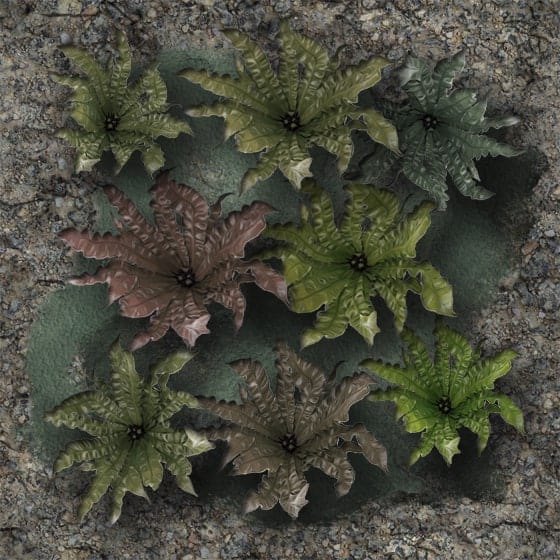
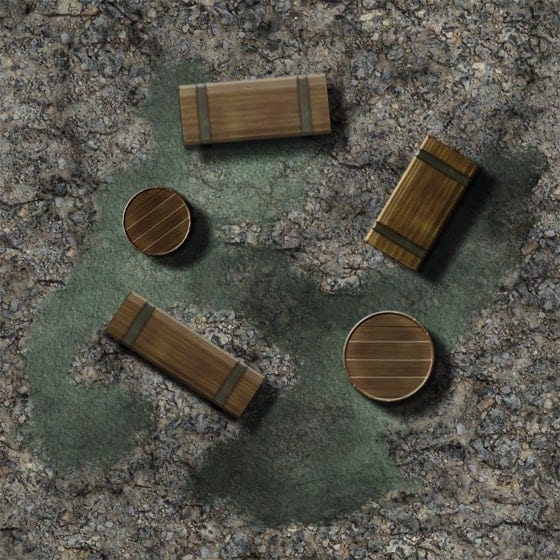
The great thing about this tile puzzle is that your players are really setting up the terrain for you giving you – the DM – time to prepare the combat encounter that follows. And you will always have an interesting battle terrain with lots of tactical options for your players to exploit.
Of course, you don’t HAVE to use these terrain tiles as a puzzle. You can just lay out a terrain if you wish and the combat encounter is also optional. This gives these tiles more replay value.
Elemental Puzzles is also a terrain tile puzzle. It’s a different puzzle system, but just like wilderness puzzles you lay out terrain that can be used for encounters. I’ve designed these tiles so that they are completely compatible with Wilderness Puzzles. So you can mix them together when using the puzzle tiles to create your own terrain.
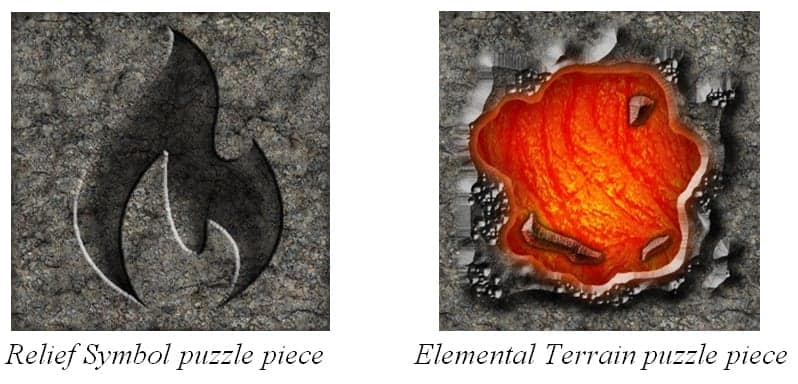
Both puzzles can be found in the Puzzle Bundle and can be both printed and used in virtual tabletops.
Dungeon Tile Puzzles You Did NOT See Coming
Tile puzzles do not only represent terrain. You can also use them for dungeons. This comes in very handy if you are in need of tiles to lay out a dungeon. And you can use a deck of these tile to create a random dungeon.
Dungeon Puzzles is – apart from these creative uses- also a great puzzle in its own right. With this tile puzzle the ENTIRE dungeon IS the puzzle. And players can’t explore the dungeon terrain until they have solved the puzzle first.
Players are given a fragmented map of a dungeon. They must solve the puzzle and as they do, pieces of the dungeon start shifting and moving either magically or mechanically, until the whole dungeon is complete. Only then can they enter.

Again, you as a DM can sit back while the players lay out the puzzle tile for you. All you need to do is add doors, and populate your dungeon with challenges like monsters and such. But since this is an article about puzzles, why not fill out your dungeon with more tile puzzles? Here’s how to do that!
Wall and Floor Tile Puzzles to Challenge Your Players
For wall tile puzzles I like to use Angels & Demons Puzzles. Players find a wall where just a few tiles are clinging to a wall. Some of the other tiles have fallen to the ground but none are broken. Other tiles may be scattered around the dungeon. They must first be retrieved to open solve this puzzle.
The object of this puzzle is to fix the mosaic of tile to solve the puzzle. Each wall tile puzzle contains an equal number of angel tiles and demon tiles. And by solving the puzzle players bring balance to the area. If they fail to do so the zealous forces of good or devious forces of evil will overrun the area.
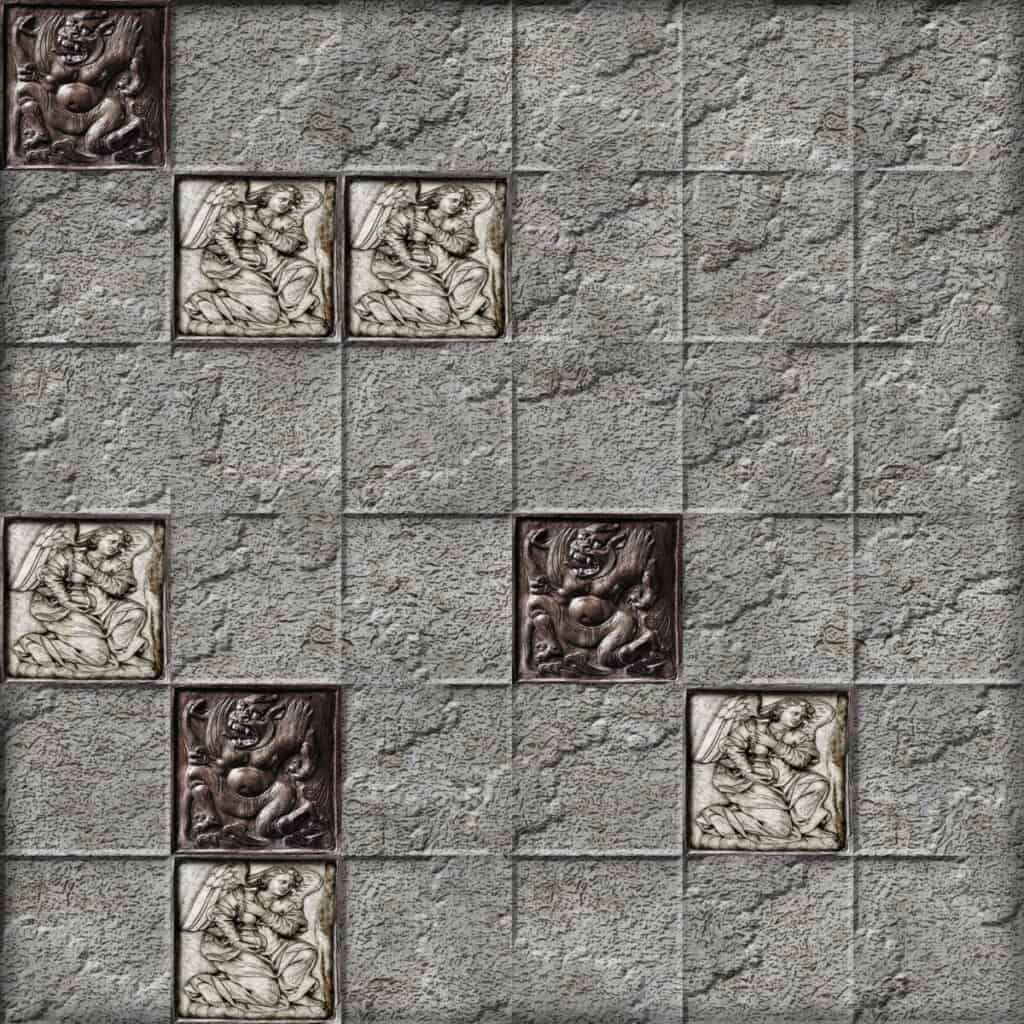
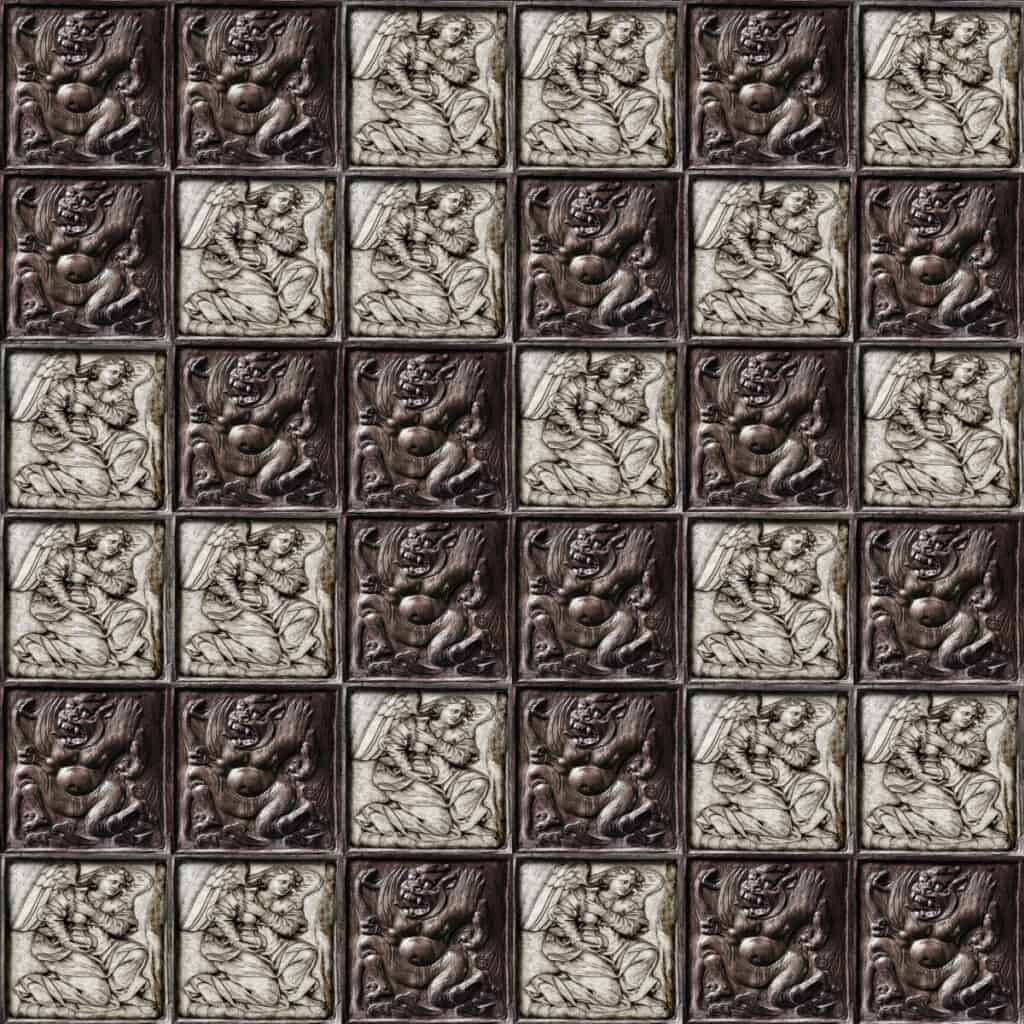
Solving this wall tile puzzle may also open a door or reveal more terrain for players to explore. If you are looking for guidance on how to lay out puzzles in a dungeon check out this article. Of course, you can also use this puzzle as a floor tile puzzle. And stepping on tile might have some effect you – the DM – decide. You can easily adapt this puzzle to your setting and story. It has lots of creative options.

For floor tile puzzles I like to use Floor Puzzles. For some reason isn’t sold as often as other puzzles, but it does get very good reviews. I like this puzzle because you can just place the tiles on the floor of any indoor terrain. PCs must walk the correct path over the puzzle tile.
Solving the puzzle opens the door or lets something happen that the DM decides.
The way to introduce this puzzle is pretty unique. There are 4 types of floor tile puzzles. Each can be tied to a different theme. I used, dwarves, elves, halflings, and humans, but you can easily change the theme to your liking.
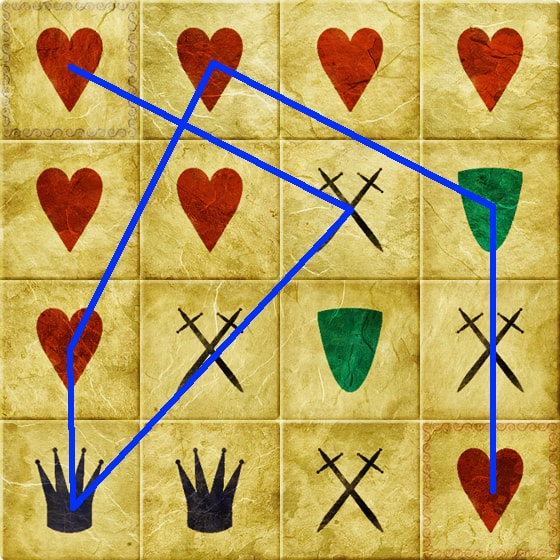
Each type of puzzle comes with a short tavern game. These are quick games with easy rules that don’t take more than ten minutes of game time. The players might think it is just a fun game, but in reality, each game teaches the rules to walking the correct pattern on the floor tiles. So once players have solves the first series of puzzles, they might go chasing after the other tavern games to learn the rules of the other tile puzzles.
If you don’t like this idea, you can just give them the rules. But chasing after tavern games isn’t something you see in every campaign and my players find it a memorable addition. It also works with any campaign setting.
Tile Puzzles Everywhere: Putting it All Together
Picture it. Your players are exploring the wild and come across a wilderness puzzle terrain. They solve the puzzle, fight some monsters, and uncover the entry to a dungeon. They solve the dungeon puzzle as well, and lay out the tile to the dungeon. Once inside, they are confronted with more wall tile and floor tile puzzles.
For some players, this is a dream come true. But other will want a little more variety in their puzzles. So here are some suggestions for other puzzles you can easily add to your tile puzzle setups. They are also a part of the Puzzle Bundle.
Lock Puzzles

In need of a Lock Puzzle? How about five hundred? With lock puzzles you can seal doors, treasure chests, arcane tomes and those pesky denizens from the underworld.
How it works: There are nine basic puzzles. A single lock puzzle has three key pieces and is easy to solve. If you combine any number of these puzzles, they become increasingly difficult to solve. So the more basic puzzles you add, the higher the difficulty.
Because you can use up to nine puzzles at a time, there are nine difficulty levels. Using all nine basic puzzles in conjunction is the most difficult. With more key pieces, there are multiple ways to fill a lock, but there is only one way to fill all locks at the same time. While a level one difficulty puzzle only takes about ten seconds to solve, a level nine puzzle would take a group about half an hour.
Door Puzzles
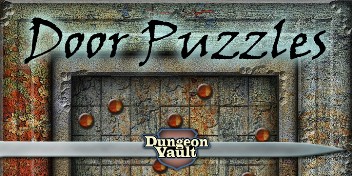
Door Puzzles can change any door into a challenging puzzle at a moment’s notice. Simply place the puzzle image over a door and your done. There are 20 premade puzzles in the pack and the means to quickly create infinite puzzles of various sizes yourself. I’ve designed this one to be quick and easy.
How it works: When players come across a door puzzle they must find the key pieces and fill out the 7 by 7 inch square. Sounds easy, right? Instead of giving players the exact amount of key pieces they need to solve this puzzle. They get more key pieces than they know what to do with. And this makes solving door puzzles a lot more difficult.
Still, all key pieces have a distinctive symmetrical shape. By using this information players can reason out exactly where key pieces go. There’s a lot more logical reasoning going on than you would suspect.
Having lock and door puzzles to complement your tile puzzles rounds out your terrain. So start building your world and surprise your players!
Banner image credit: Magic the Gathering
